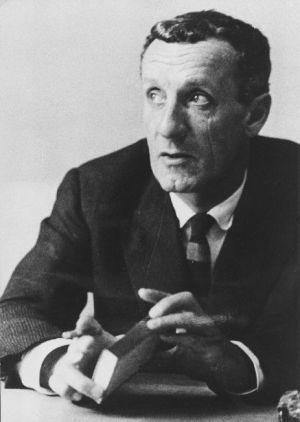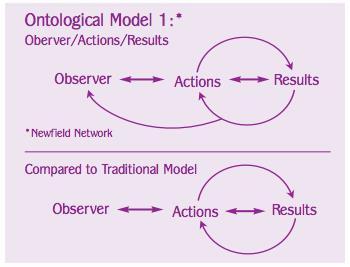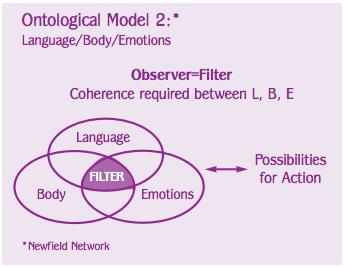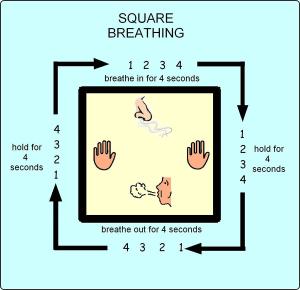Translation of the second part of the chapter “Vivacious Aliveness: A Look at Embodiment” from the manuscript of the book Willow Dee was made with the permission of the author especially for “Eros and Space”. P ervuyu often read here.
Embodiment: working definition
Many have contributed to the formulation of what embodiment is. Philosophers have been thinking about this for more than 100 years, if not more, and we can observe how the working definition evolved. It is noteworthy that the content of this concept has changed over time, reflecting an amazing shift in consciousness.
From the work that Edmund Husserl did to formulate the phenomenological definition of embodiment, until the later ontological works of Maurice Merleau-Ponty, we can observe a shift in the understanding of incarnation in the body.
Husserl postulated that “the body is not an extended physical substance as opposed to an unextended mind, but it is a living” here “from which everything that is” there “is perceived as” there “; it is a kind of locus of various types of sensations, which only the one who is embodied in the body can experience; and the coordinated system of mobility allows us to experience every moment of our definite, disposed, practical-perceptual life as pointing to something “greater” than what our present perspective provides “(Benke, 2011).

Maurice Merleau-Ponty argued that “implementation implies a distinction between the material body, which represents the body as a physiological unit, and the sensible or phenomenological body that is not only the same body, some physiological entity, but it is mine (or yours) body as I (or you) experience it. The difference between the material and sensible body is central to understanding the phenomenological approach to incarnation in the body. Embodiment is not a concept that refers to a body taken as a physiological unit. Rather, it refers to the perceived body and the role it plays in our object-oriented experiences“. By this he meant that “the living incarnation in the body is not only a means for practical action, but an essential part of the deepest structure of all knowledge” (Benke, 2011).
It is important to note that Merleau-Ponty developed the concept of the subject body as an alternative to the Cartesian cogito. This difference is particularly significant in the fact that Merleau-Ponty perceived all existentially in the world existentially. Consciousness, the world and the human body as a perceived thing are inextricably intertwined and mutually “involved” in each other.
Finally, incarnation in the body is the process of becoming a complete whole. Your body is your ally in every moment. Another way of saying this: “The body as such is the embodiment of the process of the evolutionary journey of the Spirit into matter” (Burger, 2011). Let’s agree that this concept is still evolving – and therefore is a moving target.
Embodiment in the body is the process of becoming a complete whole
Observer, action, result
The power to change ourselves is how our actions influence the world. The ontological approach considers the observer (ourselves) as the one who must take responsibility for the actions and results of these actions. The opportunity that opens here is a meaningful look at ourselves before we take the next action. When we are more aware of ourselves, we are better prepared to evaluate our behavior, to commit acts and achieve results that drive us to acquire life skills. This awareness, or comprehensive mobility and liveliness, allows us to change our own perspective faster and easier. We can give up our own position and really take into account the factual information about this or that situation – whatever our minds say about it.
Our perception, or way of thinking, limits us to what we already know, not allowing us to see the whole perspective of what we do not have a clue about. We can not change our blind spots, but if we are doing internal work to find out where they are located and how they determine the way we think, we are more likely to make more informed actions and achieve better results.

Figure 1: The ontological model
Consistency
The concept of coherence is central to incarnation in the body. For our purposes, the ontological definition of coherence will include the use of the body, emotions and language.
The body is the central place for perception, emotion experience, the act of using the language, and, of course, it is a single field for our own locus of consciousness. In this context, we also take into account the energy patterns in our body, the language of the body that we usually use, all our propensities that are manifested in life-all this is reflected in the body.
Emotions are temporary states that arise and pass through our experience throughout the day. As a rule, they are closely interrelated with certain events and are less prolonged than the mood, whereas mood is an emotional state not necessarily associated with a particular event: it is less intense, but it can last longer (Duffy, 2012).
Language is “how do we describe things for ourselves.” What adjectives we choose, what stories we tell ourselves, what beliefs we adhere to. This is how we talk with others, and how we talk to ourselves. Language simultaneously reflects our current way of thinking and determines our interaction with the world “(Duffy, 2012). Language has an incredible ability to shape our experience.
The essence of coherence is to see that our way of thinking includes our body, emotions and language. Our emotions are reflected in our body, in the choice of language, and vice versa. Consistency reflects the fact that our body, our emotions and language, aligned with each other, create a certain experience, attitude. They work together, and through them we make sense, evaluate opportunities and act. Thanks to our coherence, all actions flow in a free flow, and when we change our ideas, a whole new world opens before us.

Figure 2: The consistency model
Leadership and wisdom
Now that we clearly understand what intellectual models we use to create the embodiment approach to leadership, let’s go deeper. There is a difference between knowledge and wisdom. Knowledge consists of facts relating to our life, whereas wisdom is the ability to make right judgments, an intangible quality, cultivated through many years of experience.
Leaders of the 21st century must govern wisely. The wisdom that arises when we listen to the subtle and also rougher needs of our bodies is universal and anchors us in the collective knowledge of each other. When we know our own body, we know quite a lot about the bodies of other people. I do not want to downplay the real differences between different types of physical constitution, levels of health or physical form, but nevertheless there is a common understanding about what it means to have a body, to be aware of it and to live well inside it. For example, when a person is tuned to his own breathing, he can recognize and understand changes in the rhythm of breathing in other people and, accordingly, changes in their mood, since breathing is strongly interrelated with the emotional state. If you are a teacher, your awareness of the audience, your students,
Genesis versus Ego
The practice of the embodiment of wisdom means that we must be able to move actively and instantaneously from the reactive state of the ego back to Being. When life challenges us, our ego contracts, creating an unpleasant emotion or sensation in the body, thus informing us of the experience. At this stage, we can remain in this condensed state and react from it… and such results are expected to be less successful (often deplorable) than a possible alternative.
The flexible leader has the opportunity to be aware of these potential pitfalls and to apply immediate internal action for regulation. We do this primarily through the awareness of the feelings that have arisen: we are rushing to him, not from him . By directing our breath to where we feel contraction or tension, taking what is as it is, and finally releasing this feeling, we take the next step back to Being (Anderson, 2010). Releasing can happen through crying, shaking, laughing, screaming – or through the calm direction of breathing and awareness.
The trick is not to push away the feeling. This is a conditioned reaction: suppression. Rushing to the feeling and relying on it, really experiencing it, you allow it to dissipate quickly and completely, while the body returns to a state of balance and harmony. At this stage it is useful to smile. The smile immediately changes your physiology. Or think of other supports that will bring you back to a state of happiness and balance. Make sure that you allow this feeling of a smile or something else that supports you, spread all over your body, especially where you felt tense.
In fact, the less you suppress and the faster you can proactively expand your consciousness to stay in Being, the more you will be able to choose creative answers to existing problems – and this is important.
Relaxation: the easy way
Relaxation is the path of least resistance to the sensation of the body as a whole. The ability to relax deeply enough to watch and feel the whole body in full and instantly, will help people around you also relax and deepen their senses. This, in turn, will provide an intersubjective space for deep integration and growth – between you and someone else. To avoid ambiguity, we talk about relaxation with a clear, alert mind, and not about altered states of consciousness, such as alcohol or other substances-induced relaxation.
How can you “achieve” this? Do not do anything. Just be. Saniel Bonder calls this ability “embodied in the body by a feeling-witnessing consciousness.” He further describes: “What I mean by the embodied feeling-witnessing consciousness in the body is the crystallization of the reality of the inevitable paradox of life – the paradox that one can be infinite and finite at the same time.” “… You simultaneously live in your conscious nature and in your bodily, human personality. It means to be, suddenly or gradually, in a situation where you are at the same time in your unique personal life, and in the unconditioned, unknowable Foundation of Being, that is, in consciousness. ” “… An ineffable and yet so familiar permission to the conscious, psychic and material parts of your being to be what they are,
You are at the same time in your unique personal life, and in the unconditioned, unknowable Foundation of Being – in consciousness
Further, Bonder explains: “First, Genesis must come to life. It must begin to revitalize the body with hope and inspiration in order to release enough energy and attention for the true and absolute self, thereby enabling deep self-awareness. As long as you are suppressed and continue in the same spirit, until you have this activation, this inclusion in the perspective of a true realization of Being, your energy is actually only maintained at a very low level. Who, after experiencing self-fulfillment, will drink the juice? They need life, spirit! “.
“The answer to the question” how “is that in the context of the genuinely liberating transmission of Being, the very revival leads to the attainment of complete consciousness. The ability to get the transfer is of great importance “(Bonder, 2006).

Polarity of practice-practice
As in any living process, there are paradoxes. In the very paradox, often in subtext, there is an important meaning. Let us take a look at some of the polarities that arise in our everyday experience.
Answer or response. The answer implies a reasonable, creative action – consciously chosen and perhaps even spiritualized. Reactivity is characterized by unconscious reflex behavior, which occurs when the ego is identified with something and blindly reacts.
The purpose of the answer is to get a favorable result, and the reaction can be the same aspiration. The difference lies in the mood, in the emotion that leads to action. And this is in fact a significant difference.
One of the paradoxes of this polarity is that the response can be the most authentic response, for example, in a situation of direct, frank conversation. However, if we always use “practice of response”, we can easily fall into the trap of giving the same answer to anything and acting based on the false sensations that the ego gives us. Sincere reaction is valuable, but at the right time.
Previously, we explored the difference between Being and the ego and discussed a special process of releasing one’s ego from the state of constriction, which allows us to reconnect with the tangible sensation of Being. Find out how you feel it yourself. Do the work of slowing down and escaping from egoistic zazhatosti to an obviously deeper sense of Being. If you master this in yourself, you are already on the path to mastery.
Rest or action. Obviously, ensuring adequate and regular rest allows us to enjoy a more complete overall well-being, and also have the resources for our actions. The mode of action can be used both with full concentration, and with more relaxed, diffuse concentration. To clarify this, let’s consider “action” as such a form of activity, when “energy release” occurs.
Paradox: being receptive to the entire space and at the same time actively involved in something is the fundamental state of incarnation in the body, since both “streams” of experiences are available to you directly.
Dissociation or excessive identification. Dissociation is a kind of split in the mind, because of which there can be two independent streams of consciousness. For example, someone under the influence of hypnosis can still perform certain actions independently, while being under the control of a hypnotist. It is understood that a person is somehow disconnected from himself. Conversely, excessive identification is a narcissistic tendency to attach too much to the notion of self, one’s physical state and body. Among us, definitely, there are those who simultaneously experience dissociation and excessive identification with the body. It is a trap. The paradox is that a person can enjoy a sufficiently high level of vitality, while experiencing a clear distortion of these fundamental functions of the ego.
Perhaps you have guessed that the meaning of studying certain polarities in the experience of the incarnation in the body also consists in asking: what is behind these opposites? Observation of oneself is from the awakened and vigilant space of compassion and insight. It sounds simple, but not in practice.
Bearing compassion means taking discomfort, disappointment, various forms of constriction, arising from our reactivity. A life based on embodiment practice makes it possible to feel our emotions in the body fully consciously – and to accept any sensations at the time of their appearance. A typical conditioned reaction is to move away from any discomfort, often as quickly as possible. We all know how to do this: distracting, snacking, drinking, smoking a cigarette, overburdening yourself, constantly rechecking each step – in general, in any way. Some of us choose to simply remain unconscious in relation to our own bodily sensations, for example, suppressing, repelling emotions or living in the head.
Energy management
Energy is the currency of vitality and a high level of productivity in all spheres, not time or money. Real resources that give results in our lives, we get from our physical, mental, emotional and spiritual energy. If there is no balance in these areas, we have few funds that we can invest in our work.
The ability to effectively manage stress is as important as any form of exercise or proper nutrition. Regular contemplative practice is the key to managing your ability to remain flexible emotionally and physically. Studies show that about 97% of all diseases are in one way or another interconnected with the level of stress, and yet we continue to exhaust ourselves anyway. Provide deep peace for your body and mind, and do it regularly.
Your ability to mobilize energy, focus and be fully present can both inspire and demoralize those around you. Your vitality is the key to leadership or teaching people. And then there can be no exaggeration. When you value your own well-being, you inspire people to do the same. This creates a culture based on a collective experience of greater balance, which, in turn, leads to more complete interaction and better results.
“ Full involvement is the energy state that best serves productivity” (Schwartz). Schwartz and Lauer offer the following principles for achieving full involvement:
Principle 1: Full involvement requires the use of four separate but related sources of energy: physical, emotional, mental and spiritual.
Principle 2: As energy decreases both in excessive and inadequate use, we must balance energy costs with periodic renewal of energy.
Principle 3: To build capacity, we must go beyond our usual limits, train in the same systematic way that elite athletes.
Principle 4: Positive energy rituals – very specific energy management practices – are the key to full engagement and sustainable high performance.
In general, the fundamental need for spending and renewing our energy is one of our highest priorities. “With increasing training intensity or performance requirements, it is necessary to proportionally increase the amount of renewable energy. Allow a slip with this – and you will see a noticeable deterioration in performance “(Schwartz).
Conclusion
You already understand the importance of changing your state from ego-based self-control to a sense of Being. In addition, you realize that only practice leads to implementation of the embodiment-approach. We examined the centers in the area of the head, heart and abdomen, as well as the whole body as a sensory system. Then we looked at the role of social psychology in relation to the embodiment approach. He looked at the body as if it were a holon. We briefly touched on how our culture and environment shape our attitude to the incarnation in the body. After that, a working definition of the concept “embodiment” was proposed, which is understood as the process of gaining integrity and completeness.
Then we explored the ontological model in order to understand how our ability to observe ourselves and act proactively can lead to better results, in particular, when we proceed from the consistency of our body, emotions and language. We examined three polarities in the embodiment-practice, as well as the importance of energy management. Note that reading one article about the embodiment approach is not enough to seriously tackle the practice that will help your evolution. So go ahead and up!
Practices
Life is a great platform for practice: this and only this leads to incarnation in the body.
~ Gail Coleman
Self-study practice
Every day there are many opportunities, when we need to make a choice: whether to maintain our well-being or reduce it. Here are simple pointers that will help deepen your practice. Here are a few questions that you can ask yourself when we are engaged in the implementation of practice:
- Does this food or this drink fill my body with vitality?
- Does this activity feed or drain my energy?
- Do I exercise enough to enjoy a sporty, happy body?
- If not, what actions can I take to train regularly?
- Does this friend, colleague or family member help increase my energy or cause a leak of energy from my life as a whole?
- What kind of queries can I formulate in order to change relations with this person, to make them more balanced?
- What boundaries, perhaps, should I set for achieving a greater balance in these relations?
- Am I sleeping enough? If not, what are my main obligations that prevent me from providing enough rest? How can I change internally to ensure that I have enough sleep?
- My lifestyle contributes to sufficient physical intimacy and intimacy?
- What can I do to cultivate my vitality and experience more joy and ease?
- What prevents me from creating a healthy, nurturing lifestyle?
- What can I do to change this? What kind of support do I need to move to a healthier, more active lifestyle?
The practice of slowing down
The simple way to slow down is to set aside a few minutes at the beginning of the day to prepare your creature. Sit down and just pay attention to the sensations in the body, realize how you feel your body. Direct all your attention to the sensation of your breathing for a few minutes. When we slow down, our perceptual field opens, and as it happens, we have the opportunity to have a closer contact with the subtle aspects of what is unfolding in our environment.
For example, when we walk through the forest and stop in one place for as long as ten minutes, small movements of birds can resume. The activity of the protein will be more obvious; we can hear even insects. Our ability to notice tiny incidents is increasing. The same practice is appropriate in the classroom. Slowing down allows us to respond more creatively to everything that happens at this moment. That quality, which brings a fresh look into the experience of the present moment, can change the result in an unexpected and beautiful manner.
Love for the body
Accept your body: look at yourself in the mirror and smile. Tell your body directly that you appreciate and love it. When you wipe after a shower, talk to your body. Pay attention to how you feel. Choose clothes in which you almost shine. Fill your body with joy and enjoy the movements. Identify the parts of your body that you most admire, and admire them – about yourself or out loud! Ugh. Are not they wonderful ears?
Physical form
The obvious part of enjoying the incarnation in the body is connected with the care of the physical body, the musculoskeletal system and the cardiovascular system. Training and movement for our bodies for an hour every day is a good base. Choose the forms of activity that you like, and mix them! Try dancing, and even kayaking or strength training. Take a class that you never visited before, in a sports club near you.
Thin body / work with qi
In Western culture, the importance of cultivating chi and the need to work with our energy, or a subtle body, in order to gain more vitality, flexibility, concentration and spontaneity was largely overlooked. Think about practicing practices such as qigong, taichi, yoga, tango, or martial arts to reunite with a delicate body on purpose and on a regular basis.
Contemplative practice
Contemplative practices will help you improve your relationships with yourself and others. In particular, the benefits of the practice include:
Transforming your relationship with yourself:
- Creating a common sense of calm and well-being;
- Management of stress and its impact on your body;
- Deepening of self-understanding;
- Sharpening of attention, development of concentration and insight;
- Reinforce core values in your personal and professional life.
Improving relations with others:
- Ensuring that you treat people with compassion and wisdom;
- Help you in seeing conflicts from different angles, discovering creative opportunities for solving problems and resolving differences;
- Improve listening skills.
Enriching your relationships with the world:
- Enhance your global awareness and appreciation for the interrelationship of all life;
- The development of the ability to ask questions, study, adapt to rapid changes and cope with complexities.
For example, the practice of attentive awareness (life in the present moment) makes it possible to reduce stress, increase concentration, improve relationships and gain more peace and joy in personal and professional life. If you are a teacher – you have one of the most important and complex professions! And the professional training must deal with so that you can better teach to who you are on the essential level.
Architectural fastening
Our physical environment shapes the way we move around at home or in the office. To change behavior, we can change those spaces where we live or work.
For example, if you want to watch less TV, change the location of your sofa so that it stands opposite the windows. Make a high shelf near your desk so you can print on the computer while standing. Place a comfortable armchair and a lamp in the corner next to the bookshelf to read more often. In general, you understand.
Journal of Reflections
Take 20 minutes a day to reflect on what you like about your life, or about the things for which you are most grateful, is a wonderful way to get closer to yourself and your life. Creating daily lists or short entries that mark all the good things that happen is a very important stimulus for your body, providing positive emotional feedback on a regular basis. Logging is also great for discharging and constructive work with stress. Writing down all the negative and throwing out the paper is a useful releasing technique, as you may already know.
Optimization (your internal state)
How to consciously change your inner state:
- Become aware (regarding your inner state)
- Use physical “stresses,” negative inner dialogue, fear-based emotions and unwanted behavior to awaken your awareness.
- Take
- Consciously feel the tension in your body;
- With your exhalation let the awareness go to those areas where there is tension or constriction;
- At the end of the exhalation, allow yourself to surrender, plunging even deeper into the areas with physical stress;
- Open up and turn on the tension in the sphere of your consciousness, without blocking any of your experiences.
- Release
- Passively: continue to direct your awareness at the end of the exhalation to those parts of your body where there is tension until they relax and release energy;
- Active: screaming, shaking, crying or laughing.
- Create (call a positive internal state)
- Use the positive trigger;
- Visualize positive images, sounds, sensations, smells or tastes;
- Remember something pleasant;
- Inwardly smile;
- Repeat the positive statements.
- Be inspired
- Breathe a positive feeling through your whole body, especially through those areas where you experienced tension.
- Integrate
- Associate a positive feeling with the situation, circumstance or specific stimulus that caused tension;
- Visualize the positive feeling and the external “trigger” that caused tension, again and again, until they connect and integrate;
- If you notice that the voltage still occurs, go back to step 1 and repeat.
- Act
- Be involved in the situation, acting out of your new internal state;
- Learn and adjust the direction as needed.
Square or Box of Breathing (Box Breathing)
Mark Divine (Divine, 2016), “sea cat”, remarkably reveals this topic. He brought up the question of methods of self-regulation for a broad discussion in his blog.
“ Breathing is a unique process in the human body. Unlike, for example, from digestion, breathing has both an involuntary and an arbitrary control mechanism; it can be adjusted, but can be left “on autopilot”.
I first learned to control breathing when practicing martial arts as part of the training program for fur seals, and these techniques proved invaluable in a situation of real military action.
My favorite breathing technique, which I continued to develop after service, is what I call a “box breathing”, since the practice consists of four parts. It can be performed anywhere and anytime, unless you are engaged in some other complicated business. I practice this technique after waking up before a working day, when I’m standing in line, when I’m in a traffic jam and so on, wherever possible. It allows me to lower the heart rate and deepen the concentration. When I practice a square of breath, even for only five minutes, I remain with a deeply relaxed body and an alert, focused state of mind.
To start the practice, exhale all the air from your lungs. Hold your breath after exhaling, counting to four. Then inhale through the nose, also counting to four. Hold your breath after inhaling also by four counts. When you hold your breath, do not allow excessive pressure and resistance. Rather, keep the feeling of expansion, despite the fact that you do not inhale. Then gradually relax the respiratory muscles and exhale smoothly through the nose, counting to four. This is one cycle of practice of the square of breathing. “

I recommend repeating this cycle for at least five minutes to get the full effect. I came to the conclusion that it is better to do one session per day for 10 to 20 minutes than a few visits a couple of minutes during the day. The square of respiration in the proportion 4 – 4 – 4 – 4 has a neutral energy effect: it will not charge you too much and will not drive into a drowsy state. However, this practice, as was said earlier, will make you very vigilant and stable, ready for action.
Bibliography
- Almaas, A. (1987). Diamond Heart Book III . Boston, MA .
- Almaas, A. (1988). Pearl Beyond Price: Integration of Personality into Being: An Object Relations Approach. Boston, MA : Shambala.
- Anderson, DA (2010). Beyond Change Management. San Francisco, CA : Pfeiffer.
- Appel, W. (2013, February 26). Integrated Response to Decision Making: Head, Heart, Gut. Retrieved from WendyAppel.com.
- Audi, R. (1999). The Cambridge Dictionary of Philosophy, Second Edition. Cambridge: Cambridge University Press.
- Benke, EA (2011, August). Husserl’s Phenomenolgy of Embodiment. Retrieved May 15, 2013, from Internet Encyclopedia of Philosophy.
- Bonder, S. (2006). Waking Down: Beyond Hypermasculine Dharmas. San Anselmo, CA : Mt. Tam Awakenings.
- Brothers, C. (2005). Language and the Pursuit of Happiness. Naples, FL , USA : New Possibilities Press.
- Burger, B. (2011). Esoteric Anatomy: Body As Consciousness. San Francisco, CA : North Atlantic Books.
- Cuddy, A. (2012, October 1). Your Body Language Shapes Who You Are.
- Dea, W. (Ed.). (2011). Igniting Brilliance: Integral Education for the 21st Century. Tuscon, AZ : Integral Publishers.
- Duffy, KS (2012). An Ontological Approach to Thought Loops and Growth Edges.
- Hadazy, A. (2010, February 12). Think Twice: How the Gut’s “Second Brain” Influences Mood and Well-Being. Scientific American Magazine .
- Heartmath Institute. (nd). You Can Change Your DNA . Creed Boulder, CA .
- Institute of Heartmath. (2013, May 15). Research FAQS . Retrieved May 15, 2 – 13, from the Institute of Heartmath: Connecting Hearts and Minds.
- Internet Encyclopedia of Philosophy: A Peer Reviewed Academic Resource. (2011, August 27). Husserl’s Phenomenology of Embodiment.
- Josephs, BJ (2007). Leadership Agility. San Francisco, CA : Jossey-Bass.
- March, S. (2013). Integral Action Design. San Francisco, CA , 2013.
- Marshall, SP (2006). The Power to Transform: Leadership That Brings Learning And Schooling to Life. San Francisco, CA : Jossey-Bass.
- Pearce, JC (2002). The Biology of Transcendence. Rochester, VT : Park Street Press.
- Peter Senge, CO (2004). Presence: Human Purpose and the Field of the Future. New York, NY : Crown Business.
- Rollin McCraty, PM (nd). Modulation of DNA by Heart-Focused Intention.
- Schwartz, JL (nd). The Power of Full Engagement. Managing Energy, Not Time, is the Key to High Performance and Personal Renewal . Retrieved May 23, 2013
- Stanley, BJ (2013, May 6). I Am Not This Body. Retrieved May 10, 2013, from osvilt.com.
- The Body: A Phenomenological Perspective. (2013, May 8).
- University of Briston. (2013, May 10). University of Briston Civil Engineering, Holon. A Definition .
- Weiss, G. a. (Ed.). (1999). Perspectives on Embodiment. Routledge.



